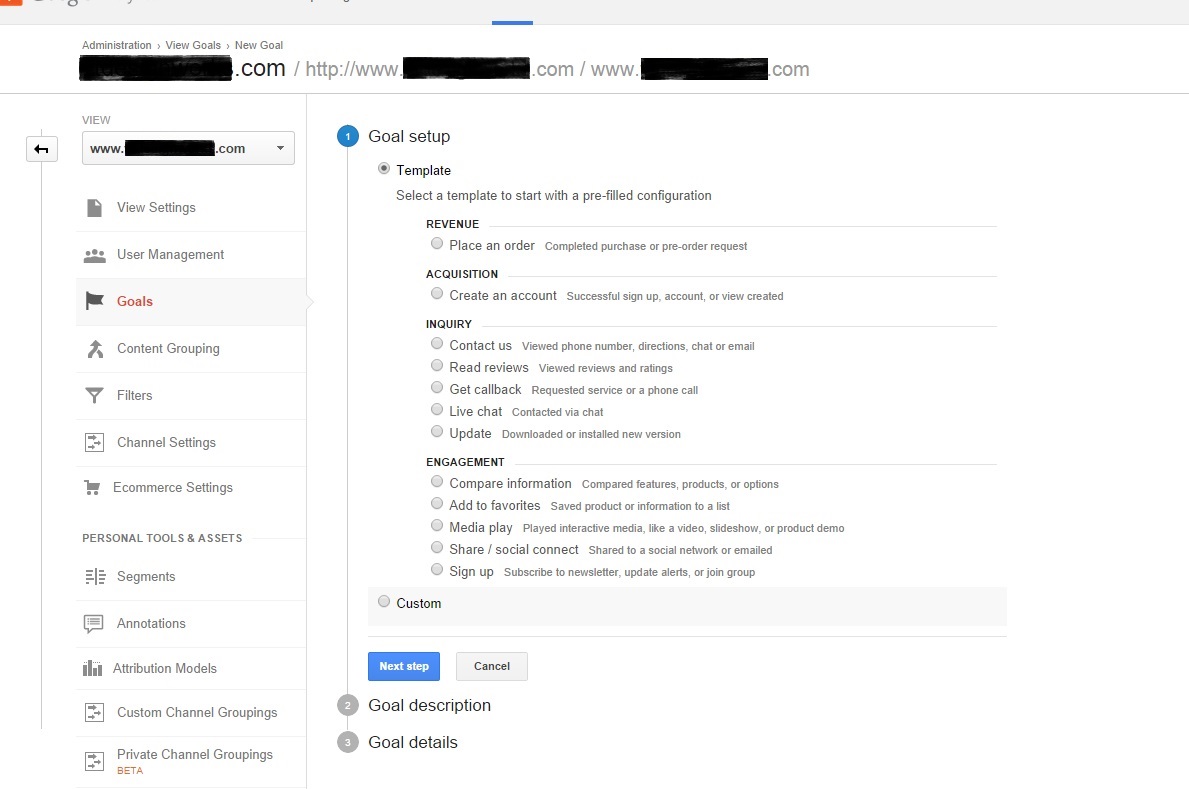Discover the Limitations of Google Analytics Goals: Unveiling the Information Kind That Remain Untrackable
As services increasingly rely on data-driven decision-making, comprehending the constraints of tools like Google Analytics ends up being extremely important. While Google Analytics Goals offer valuable understandings into customer interactions, there exist information kinds that avoid monitoring, posing challenges to a comprehensive understanding of user actions.
Insufficient Customer Journey Tracking
Insufficient customer trip monitoring within Google Analytics can prevent the capacity to properly analyze user behavior. When the user journey is not fully tracked, there are spaces in the data that avoid a thorough understanding of just how customers interact with a web site. This absence of understanding can cause missed chances for optimization and enhancements to the customer experience.
One typical issue with insufficient customer trip tracking is the failure to see the full course that customers take before completing a goal or leaving the website. Without this details, it is testing to recognize where users may be coming across barriers or rubbing points that prevent them from transforming. In addition, incomplete tracking can cover the effect of specific advertising and marketing efforts or site changes on user behavior.
To resolve this restriction, it is vital to set up proper monitoring systems within Google Analytics to capture the whole individual journey. This might include setting up occasion monitoring, goal funnels, or utilizing tools like Google Tag Manager to make sure that no essential communications go unrecorded. By acquiring a comprehensive view of the customer journey, site proprietors can make more enlightened choices to enhance customer interaction and drive conversions.
Acknowledgment Obstacles
Navigating with attribution challenges in Google Analytics needs a thorough understanding of how different touchpoints add to the general conversion process. Attribution difficulties emerge from the intricacy of modern-day client trips, where users communicate with several channels before converting.
One typical attribution challenge is the difficulty in associating conversions to the right resource, specifically in situations where individuals interact with numerous channels prior to converting. In addition, cross-device tracking postures one more acknowledgment difficulty, as users frequently change between gadgets during their journey, making it challenging to track their communications flawlessly.
Offline Conversions
Offered the difficulties connected with connecting conversions properly in online networks, the measurement of offline conversions provides a significant opportunity for marketers seeking an extra comprehensive understanding of their clients' trip. Offline conversions refer to activities that consumers take in the physical globe, such as making purchases in brick-and-mortar stores or over the phone, going to occasions, or engaging with printed materials - what data is google analytics goals unable to track. These conversions are vital for businesses that run both online and offline, as they offer beneficial insights into the performance of marketing projects across various touchpoints
Tracking offline conversions typically posed a considerable obstacle for marketing experts, as it was testing to connect these actions back to certain online communications accurately. However, with innovations in technology, such as the integration of CRM systems, distinct identifiers, and voucher codes, organizations can currently link the void in between online and offline information to gain a more all natural sight of customer behavior. By successfully measuring offline conversions, online marketers can optimize their techniques, allot sources a lot more efficiently, and eventually boost the total consumer experience.
Cross-Device Monitoring
Cross-device tracking plays a crucial duty in comprehending the interconnected nature of customers' digital communications throughout several tools. In today's omnichannel globe, where users seamlessly change between mobile phones, desktops, and tablet computers, tracking their actions across these devices is important for marketers to acquire a comprehensive view of their consumer journey.

In addition, privacy issues and laws such as GDPR and CCPA have even more challenging cross-device tracking. With customers requiring more control over their data and increased limitations on tracking innovations, marketers need to discover cutting-edge and privacy-compliant means to attach user interactions across gadgets.
Dynamic Material Involvement
Understanding customer engagement with dynamic web content is crucial in optimizing electronic marketing approaches for enhanced target market communication. Dynamic click content describes site aspects that transform based on individual habits, choices, or other elements, using a customized experience. Tracking customer interactions with dynamic content poses obstacles for standard analytics tools like Google Analytics.
While Google Analytics can track basic communications like clicks and web page sights, it might struggle to record more nuanced involvements within dynamic web content. what data is google analytics goals unable to track. Metrics such as time invested on specific vibrant elements, float actions, or interactions within pop-ups are often not conveniently measurable utilizing conventional tracking approaches. This limitation prevents online marketers' ability to completely understand exactly how individuals are engaging with vibrant web content and tailor their approaches appropriately

Verdict
Finally, Google Analytics objectives have limitations in tracking insufficient customer trips, connecting conversions accurately, catching offline conversions, tracking cross-device communications, and measuring dynamic web content involvement. These restraints highlight the importance of exploring additional tracking methods and tools to acquire a much more comprehensive understanding of individual habits and conversions past what Google Analytics can give.
While Google Analytics Goals deal beneficial understandings right into customer communications, there exist data kinds that avoid monitoring, posturing obstacles to an extensive understanding of individual behavior.Incomplete user trip monitoring within Google Analytics can impede the capability to precisely evaluate individual actions. When the individual trip is not completely tracked, there are voids in the data that protect against a detailed understanding of exactly how individuals engage with a web site.One typical problem with incomplete user journey tracking is the lack of ability to see the from this source full path that users take in the past finishing an objective or leaving the site. By getting a detailed view of the customer journey, website proprietors can make more informed choices to improve individual interaction and drive conversions.